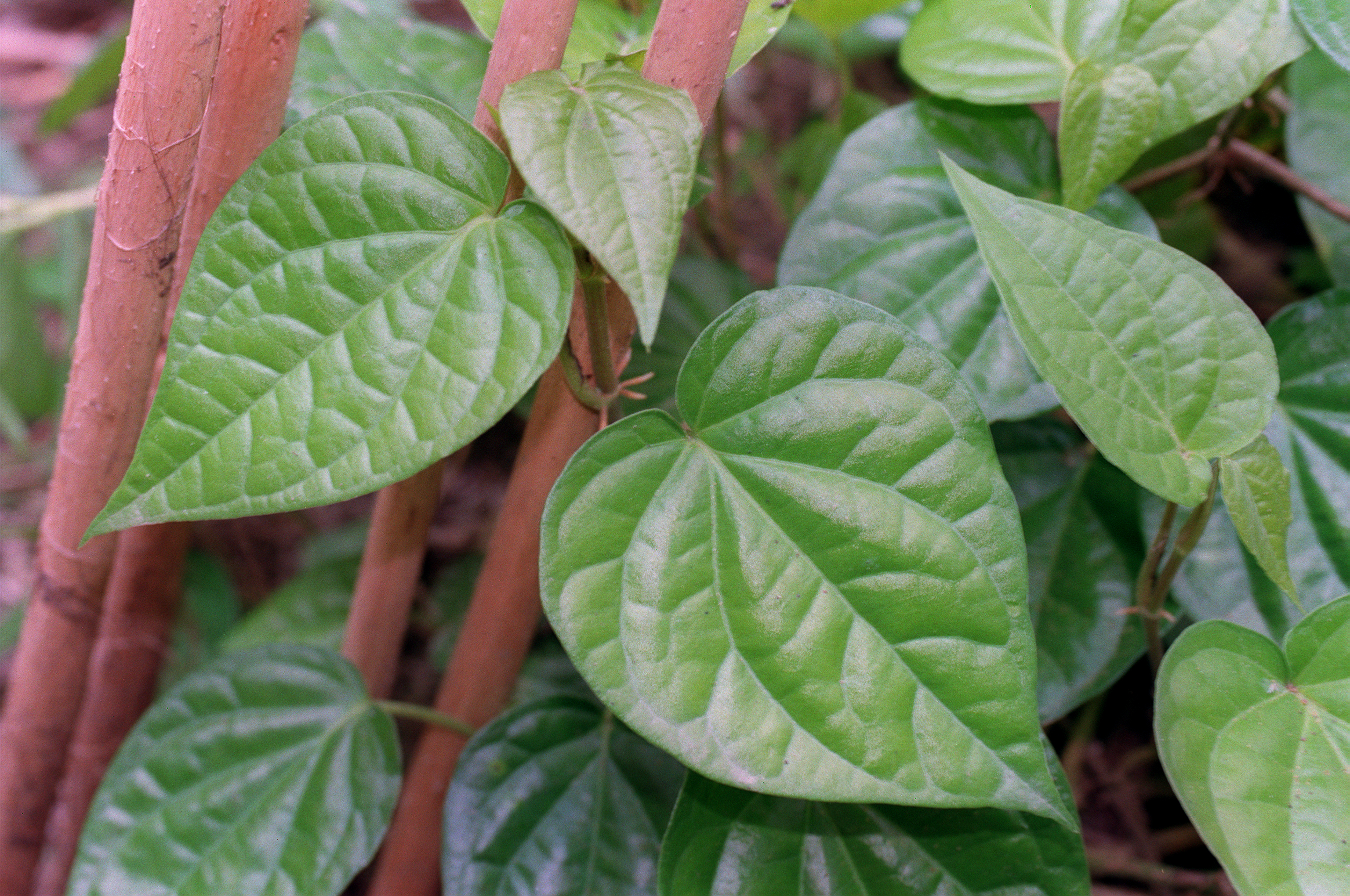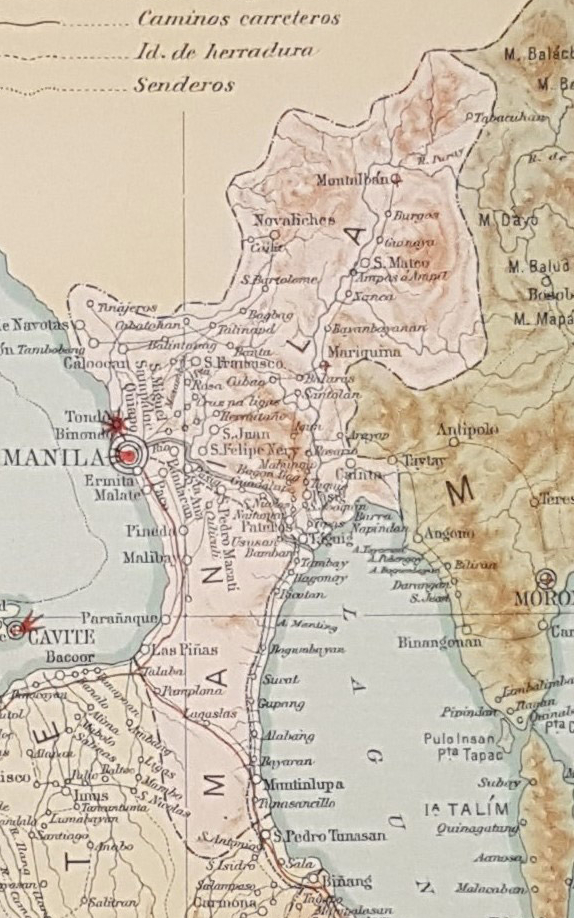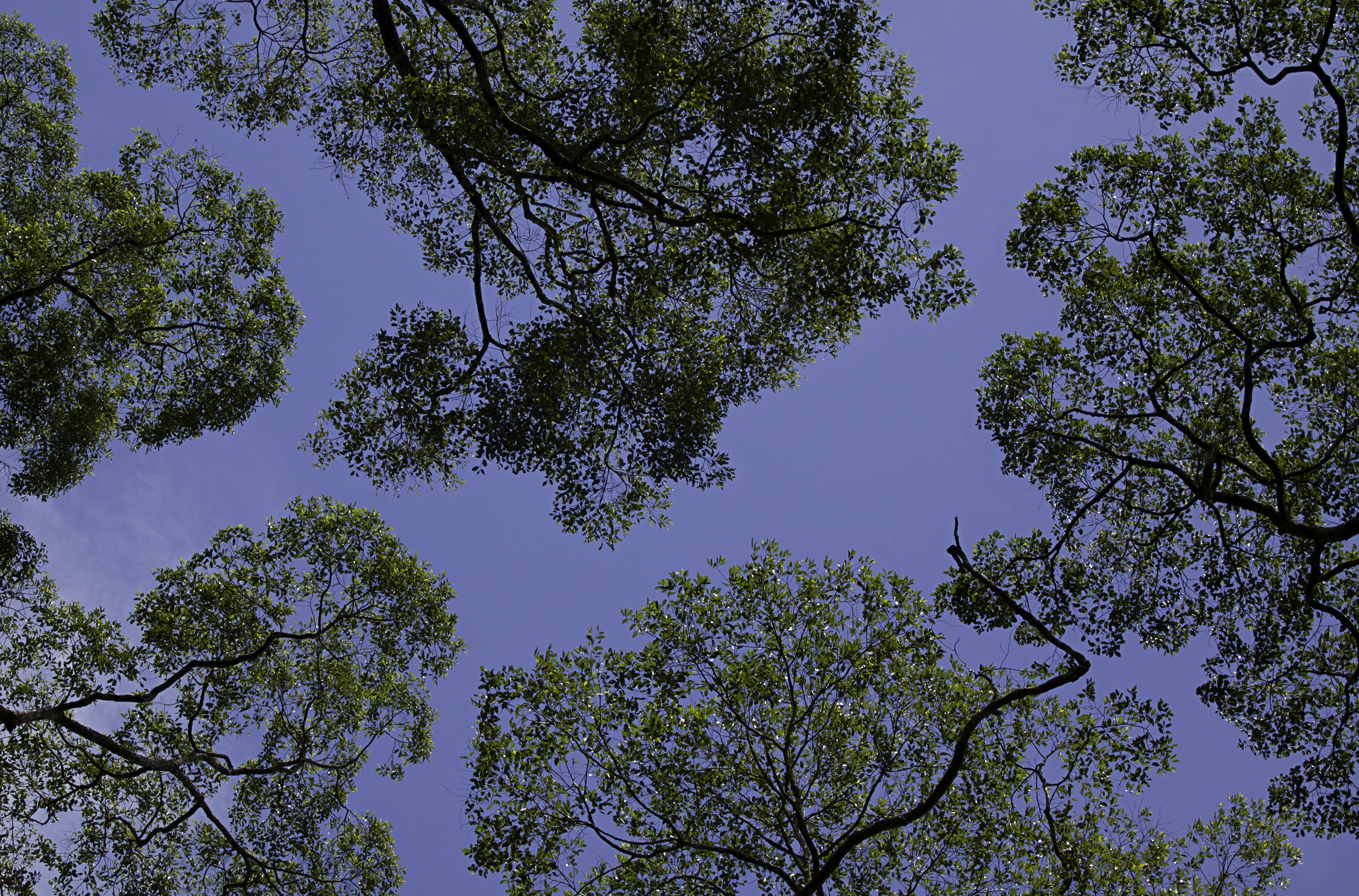|
Strongylodon Juangonzalezii
''Strongylodon juangonzalezii'', commonly called JC's vine or purple jade vine, is a species of leguminous perennial liana (woody vine) endemic to the tropical forests of the Philippines. It bears a cluster of large flowers that are initially lilac to purple in color, but become a striking blue as they mature. Taxonomy ''Strongylodon juangonzalezii'' was first described in 2016 from specimens collected from the Buenavista Protected Landscape of Mulanay, Quezon Province. It is named after Juan Carlos Tecson Gonzalez, a professor of zoology and the then director of the UPLB Museum of Natural History. The generic name comes from Greek ''strongylos'' ("round") and ''odontos'' ("tooth-like"), in reference to the teeth-like shape of the flowers. Description ''Strongylodon juangonzalezii'' is a large woody vine (liana) that climbs up to forest canopies. Each leaf is borne on long petioles that split into three leaflets with rounded bases and pointed tips, each around long and ... [...More Info...] [...Related Items...] OR: [Wikipedia] [Google] [Baidu] |
Buenavista Protected Landscape
The Buenavista Protected Landscape is a conservation area and an archaeological site located on Bondoc Peninsula in the southern Luzon province of Quezon in the Philippines. It conserves an important watershed area composed of secondary-growth forest, grassland and coconut land in the rural village of Buenavista within the coastal municipality of Mulanay. The area was primarily set aside for watershed protection and timber production in 1937 covering approximately . In 2000, it was reestablished as a protected landscape area under the National Integrated Protected Areas System. The area is known as the site of an ancient village containing unique limestone graves discovered in 2011. The protected area, including the limestone tombs of Kamhantik were recommended by various scholars to be included in the tentative list of UNESCO World Heritage Sites, yet no government or private entities have yet to file a tentative nomination to the UNESCO Secretariat. Description The Buenavista P ... [...More Info...] [...Related Items...] OR: [Wikipedia] [Google] [Baidu] |
Petiole (botany)
In botany, the petiole () is the stalk that attaches the leaf blade to the stem, and is able to twist the leaf to face the sun. This gives a characteristic foliage arrangement to the plant. Outgrowths appearing on each side of the petiole in some species are called stipules. Leaves with a petiole are said to be petiolate, while leaves lacking a petiole are called sessile or apetiolate. Description The petiole is a stalk that attaches a leaf to the plant stem. In petiolate leaves, the leaf stalk may be long, as in the leaves of celery and rhubarb, or short. When completely absent, the blade attaches directly to the stem and is said to be sessile. Subpetiolate leaves have an extremely short petiole, and may appear sessile. The broomrape family Orobanchaceae is an example of a family in which the leaves are always sessile. In some other plant groups, such as the speedwell genus '' Veronica'', petiolate and sessile leaves may occur in different species. In the grasses ( Poacea ... [...More Info...] [...Related Items...] OR: [Wikipedia] [Google] [Baidu] |
Endemic Flora Of The Philippines
Endemism is the state of a species being found in a single defined geographic location, such as an island, state, nation, country or other defined zone; organisms that are indigenous to a place are not endemic to it if they are also found elsewhere. For example, the Cape sugarbird is found exclusively in southwestern South Africa and is therefore said to be ''endemic'' to that particular part of the world. An endemic species can be also be referred to as an ''endemism'' or in scientific literature as an ''endemite''. For example ''Cytisus aeolicus'' is an endemite of the Italian flora. ''Adzharia renschi'' was once believed to be an endemite of the Caucasus, but it was later discovered to be a non-indigenous species from South America belonging to a different genus. The extreme opposite of an endemic species is one with a cosmopolitan distribution, having a global or widespread range. A rare alternative term for a species that is endemic is "precinctive", which applies to s ... [...More Info...] [...Related Items...] OR: [Wikipedia] [Google] [Baidu] |
Vines
A vine (Latin ''vīnea'' "grapevine", "vineyard", from ''vīnum'' "wine") is any plant with a growth habit of trailing or scandent (that is, climbing) stems, lianas or runners. The word ''vine'' can also refer to such stems or runners themselves, for instance, when used in wicker work.Jackson; Benjamin; Daydon (1928). ''A Glossary of Botanic Terms with their Derivation and Accent'', 4th ed. London: Gerald Duckworth & Co. In parts of the world, including the British Isles, the term "vine" usually applies exclusively to grapevines (''Vitis''), while the term "climber" is used for all climbing plants. Growth forms Certain plants always grow as vines, while a few grow as vines only part of the time. For instance, poison ivy and bittersweet can grow as low shrubs when support is not available, but will become vines when support is available. A vine displays a growth form based on very long stems. This has two purposes. A vine may use rock exposures, other plants, or other ... [...More Info...] [...Related Items...] OR: [Wikipedia] [Google] [Baidu] |
Phaseoleae
The plant tribe Phaseoleae is one of the subdivisions of the legume subfamily Faboideae, in the unranked NPAAA clade. This group includes many of the beans cultivated for human and animal food, most importantly from the genera ''Glycine'', ''Phaseolus'', and ''Vigna''. Taxonomy Although the tribe as defined in the late 20th century does not appear to be monophyletic, there does seem to be a monophyletic group which roughly corresponds to the tribe Phaseoleae (with some changes). The earlier concept of Phaseoleae is paraphyletic relative to the tribes Abreae and Psoraleeae, plus most of Millettieae and parts of Desmodieae. The following subtribes and genera are recognized by the USDA: ollow tribe links and genera lists for the accepted genera in each tribe/ref> ;Cajaninae * '' Adenodolichos'' Harms * ''Bolusafra'' Kuntze * ''Cajanus'' Adans. * ''Carrissoa'' Baker f. * ''Chrysoscias'' E. Mey. * ''Dunbaria'' Wight & Arn. * ''Eriosema'' (DC.) Desv. * ''Flemingia'' Roxb. ''ex'' W ... [...More Info...] [...Related Items...] OR: [Wikipedia] [Google] [Baidu] |
Strongylodon Macrobotrys
''Strongylodon macrobotrys'', commonly known as jade vine, emerald vine''The Royal Horticultural Society A–Z Encyclopedia of Garden Plants'', ed. Christopher Brickell, Dorling Kindersley, London, 1996, , p987 or turquoise jade vine, is a species of leguminous perennial liana (woody vine) endemic to the tropical forests of the Philippines. Its local name is ''tayabak''. A member of the Fabaceae (the pea and bean family), it is closely related to beans such as kidney bean and runner bean. ''Strongylodon macrobotrys'' is pollinated by bats. Origins ''Strongylodon macrobotrys'' was discovered in 1841 on the jungled slopes of Mount Makiling, on the Philippines’ Luzon Island, by members of the United States Exploring Expedition led by U.S. Navy Lt. Charles Wilkes. One can only imagine how startling that apparition must have been, but we are left only with the description of the Harvard-based botanist Asa Gray, who had locked horns with Wilkes previously and elected not to join t ... [...More Info...] [...Related Items...] OR: [Wikipedia] [Google] [Baidu] |
Rizal (province)
Rizal, officially the Province of Rizal ( fil, Lalawigan ng Rizal), is a province in the Philippines located in the Calabarzon region in Luzon. Its capital is the city of Antipolo. It is about east of Manila. The province is named after José Rizal, one of the main national heroes of the Philippines. Rizal is bordered by Metro Manila to the west, Bulacan to the north, Quezon to the east and Laguna to the southeast. The province also lies on the northern shores of Laguna de Bay, the largest lake in the country. Rizal is a mountainous province perched on the western slopes of the southern portion of the Sierra Madre mountain range. Pasig served as its capital until 2008, even it became a part of the newly created National Capital Region since November 7, 1975. A provincial capitol has been in Antipolo since 2009, making it the administrative center. On June 19, 2020, President Rodrigo Duterte signed Republic Act No. 11475, which designated Antipolo as the capital of Rizal. The c ... [...More Info...] [...Related Items...] OR: [Wikipedia] [Google] [Baidu] |
Masungi Georeserve
The Masungi Georeserve is a conservation area in the Philippines situated in the southern Sierra Madre range in Baras. It centers on the geological formations of Masungi Rock, at an elevation of . In 1993, the Masungi Rock and its vicinity was proposed to be declared as a ''Strict Nature Reserve'' and ''Wildlife Sanctuary.'' It has been a popular destination for hikes and day trips from Manila and started development towards Geopark status. Description The Masungi Georeserve is located at Kilometer 47, Marilaque Highway, Baras, Rizal, Philippines. The Masungi Georeserve is characterized by rugged limestone karst peaks, steep slopes, and surrounding lush montane rainforests. It contains several caves, including the ''Yungib ni Ruben'' (Ruben's Cave), which features stalactite and stalagmite formations, as well as a man-made fountain. A popular attraction in the park is the ''Sapot'' ("Cobweb"), a metallic platform with wooden steps which allows visitors to walk on suspended ... [...More Info...] [...Related Items...] OR: [Wikipedia] [Google] [Baidu] |
Luzon
Luzon (; ) is the largest and most populous island in the Philippines. Located in the northern portion of the Philippines archipelago, it is the economic and political center of the nation, being home to the country's capital city, Manila, as well as Quezon City, the country's most populous city. With a population of 64 million , it contains 52.5% of the country's total population and is the fourth most populous island in the world. It is the 15th largest island in the world by land area. ''Luzon'' may also refer to one of the three primary island groups in the country. In this usage, it includes the Luzon mainland, the Batanes and Babuyan groups of islands to the north, Polillo Islands to the east, and the outlying islands of Catanduanes, Marinduque and Mindoro, among others, to the south. The islands of Masbate, Palawan and Romblon are also included, although these three are sometimes grouped with another of the island groups, the Visayas. Etymology The n ... [...More Info...] [...Related Items...] OR: [Wikipedia] [Google] [Baidu] |
Strongylodon
''Strongylodon'' is a genus of flowering plants in the legume family, Fabaceae. It belongs to the subfamily Faboideae. The most well-known species of this genus is ''Strongylodon macrobotrys'', also known as jade vine. Taxonomy The genus is named by Asa Gray in 1854 describing the jade vine discovered a decade earlier by members of the United States Exploring Expedition led by U.S. Navy Lt. Charles Wilkes in Mount Makiling, Luzon; although Gray did not join the voyage himself. The genus name derives from ''strongylos'' "round", and ''odous'' "tooth",, . referring to the rounded teeth of the jade vine's calyx. Species * '' Strongylodon archboldianus'' Merr. & L.M.Perry * '' Strongylodon caeruleus'' Merr. * '' Strongylodon celebicus'' Huang * '' Strongylodon crassifolius'' Perkins * '' Strongylodon craveniae'' R.Baron & Baker * '' Strongylodon decipiens'' Verdc. * '' Strongylodon elmeri'' Merr. * '' Strongylodon juangonzalezii'' Hadsall, Alejado & Cajano * '' Strongylodon l ... [...More Info...] [...Related Items...] OR: [Wikipedia] [Google] [Baidu] |
Secondary Growth Forest
A secondary forest (or second-growth forest) is a forest or woodland area which has re-grown after a timber harvest or clearing for agriculture, until a long enough period has passed so that the effects of the disturbance are no longer evident. It is distinguished from an old-growth forest (primary or primeval forest), which has not recently undergone such disruption, and complex early seral forest, as well as third-growth forests that result from harvest in second growth forests. Secondary forest regrowing after timber harvest differs from forest regrowing after natural disturbances such as fire, insect infestation, or windthrow because the dead trees remain to provide nutrients, structure, and water retention after natural disturbances. However, often after natural disturbance the timber is harvested and removed from the system, in which case the system more closely resembles secondary forest rather than seral forest. Description Depending on the forest, the development of p ... [...More Info...] [...Related Items...] OR: [Wikipedia] [Google] [Baidu] |
Forest Canopies
In biology, the canopy is the aboveground portion of a plant cropping or crop, formed by the collection of individual plant crowns. In forest ecology, canopy also refers to the upper layer or habitat zone, formed by mature tree crowns and including other biological organisms ( epiphytes, lianas, arboreal animals, etc.). The communities that inhabit the canopy layer are thought to be involved in maintaining forest diversity, resilience, and functioning. Sometimes the term canopy is used to refer to the extent of the outer layer of leaves of an individual tree or group of trees. Shade trees normally have a dense canopy that blocks light from lower growing plants. Observation Early observations of canopies were made from the ground using binoculars or by examining fallen material. Researchers would sometimes erroneously rely on extrapolation by using more reachable samples taken from the understory. In some cases, they would use unconventional methods such as chairs suspe ... [...More Info...] [...Related Items...] OR: [Wikipedia] [Google] [Baidu] |
.jpg)





